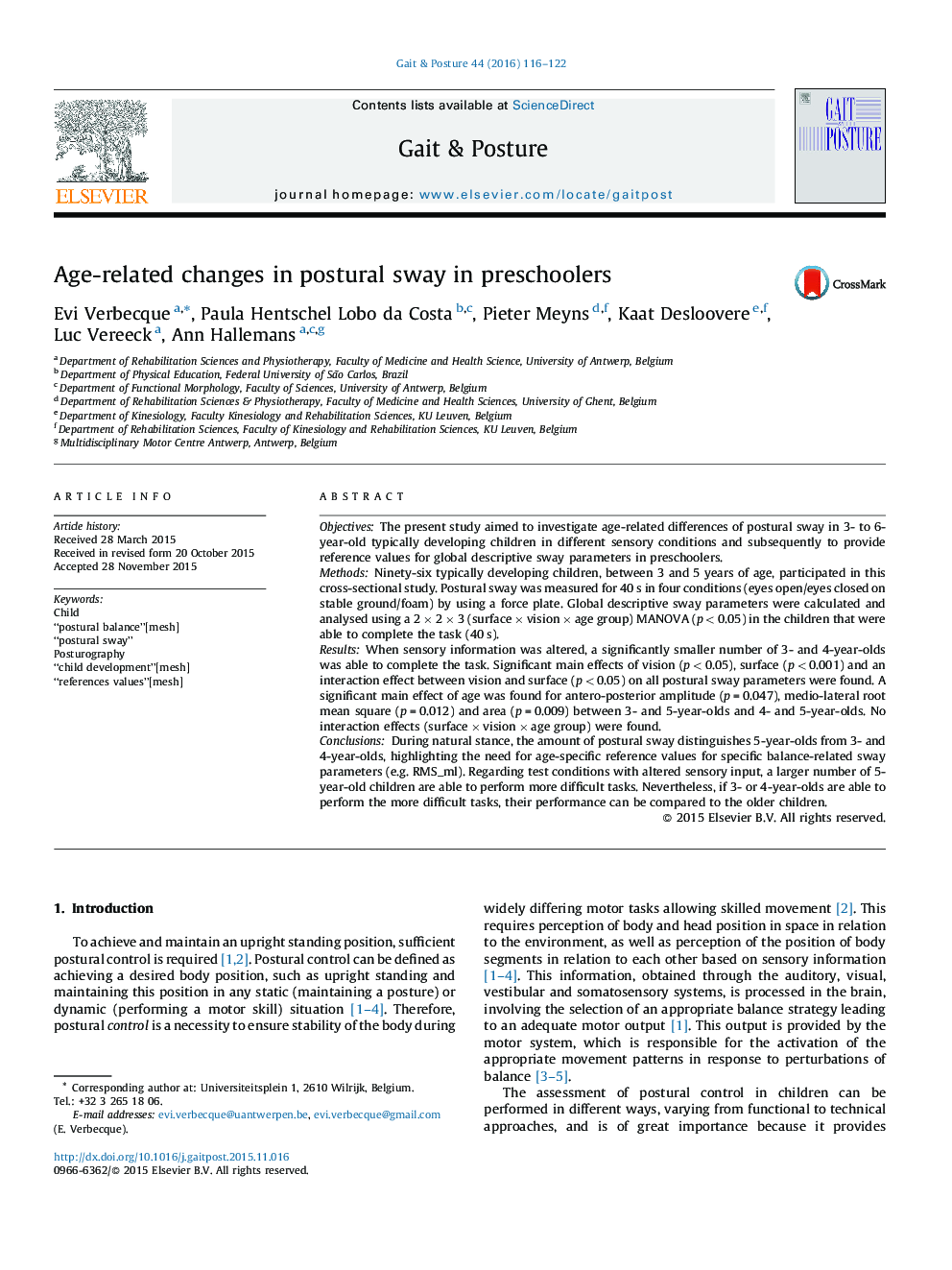| کد مقاله | کد نشریه | سال انتشار | مقاله انگلیسی | نسخه تمام متن |
|---|---|---|---|---|
| 4055546 | 1603851 | 2016 | 7 صفحه PDF | دانلود رایگان |
• Not all 3 and 4-year-olds are able to maintain bipedal stance with eyes closed.
• Sensory perturbations provoke an increase of postural sway in all preschoolers.
• 3-, 4- and 5-year-old children show similar amount of sway in different conditions.
ObjectivesThe present study aimed to investigate age-related differences of postural sway in 3- to 6-year-old typically developing children in different sensory conditions and subsequently to provide reference values for global descriptive sway parameters in preschoolers.MethodsNinety-six typically developing children, between 3 and 5 years of age, participated in this cross-sectional study. Postural sway was measured for 40 s in four conditions (eyes open/eyes closed on stable ground/foam) by using a force plate. Global descriptive sway parameters were calculated and analysed using a 2 × 2 × 3 (surface × vision × age group) MANOVA (p < 0.05) in the children that were able to complete the task (40 s).ResultsWhen sensory information was altered, a significantly smaller number of 3- and 4-year-olds was able to complete the task. Significant main effects of vision (p < 0.05), surface (p < 0.001) and an interaction effect between vision and surface (p < 0.05) on all postural sway parameters were found. A significant main effect of age was found for antero-posterior amplitude (p = 0.047), medio-lateral root mean square (p = 0.012) and area (p = 0.009) between 3- and 5-year-olds and 4- and 5-year-olds. No interaction effects (surface × vision × age group) were found.ConclusionsDuring natural stance, the amount of postural sway distinguishes 5-year-olds from 3- and 4-year-olds, highlighting the need for age-specific reference values for specific balance-related sway parameters (e.g. RMS_ml). Regarding test conditions with altered sensory input, a larger number of 5-year-old children are able to perform more difficult tasks. Nevertheless, if 3- or 4-year-olds are able to perform the more difficult tasks, their performance can be compared to the older children.
Journal: Gait & Posture - Volume 44, February 2016, Pages 116–122
